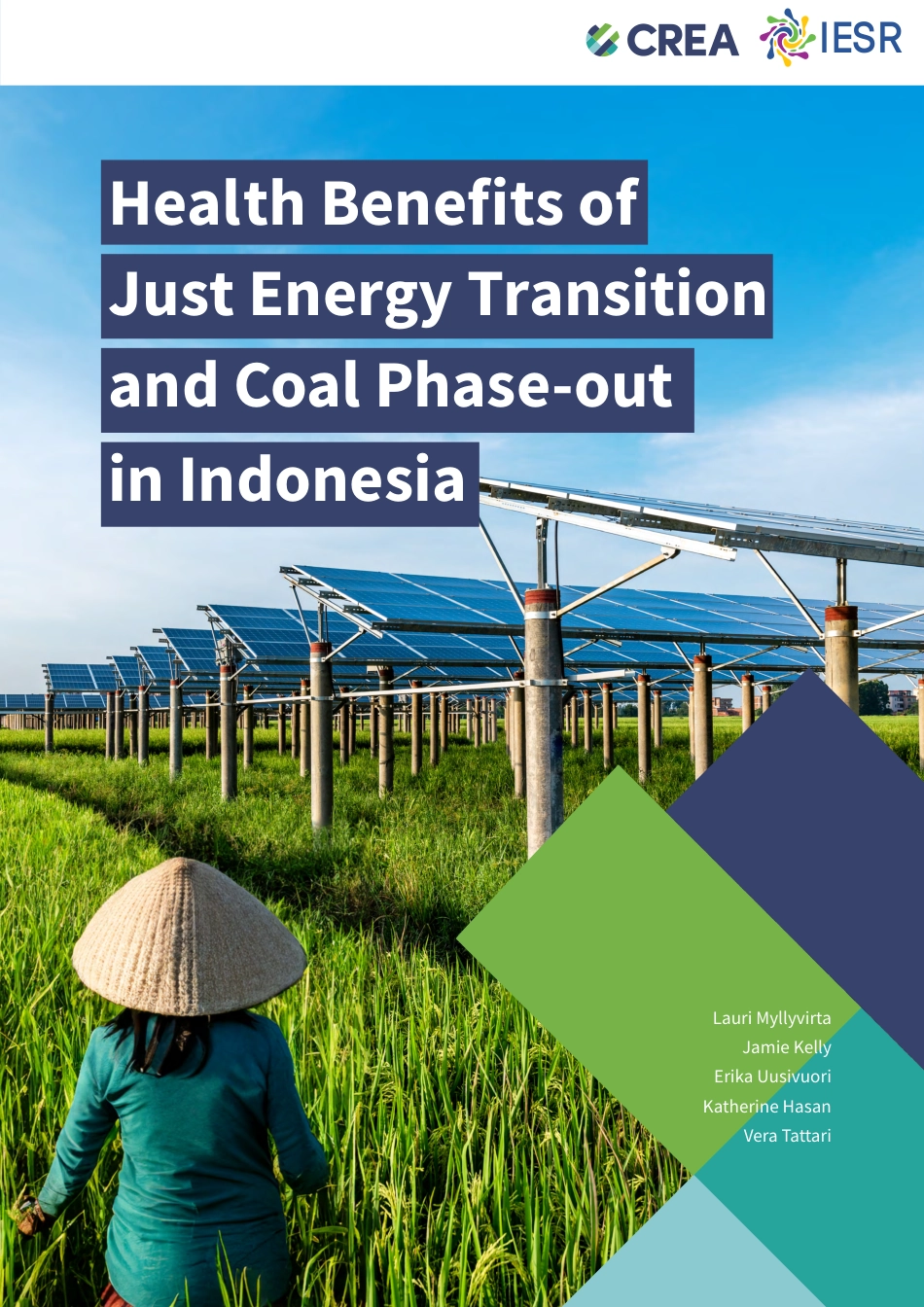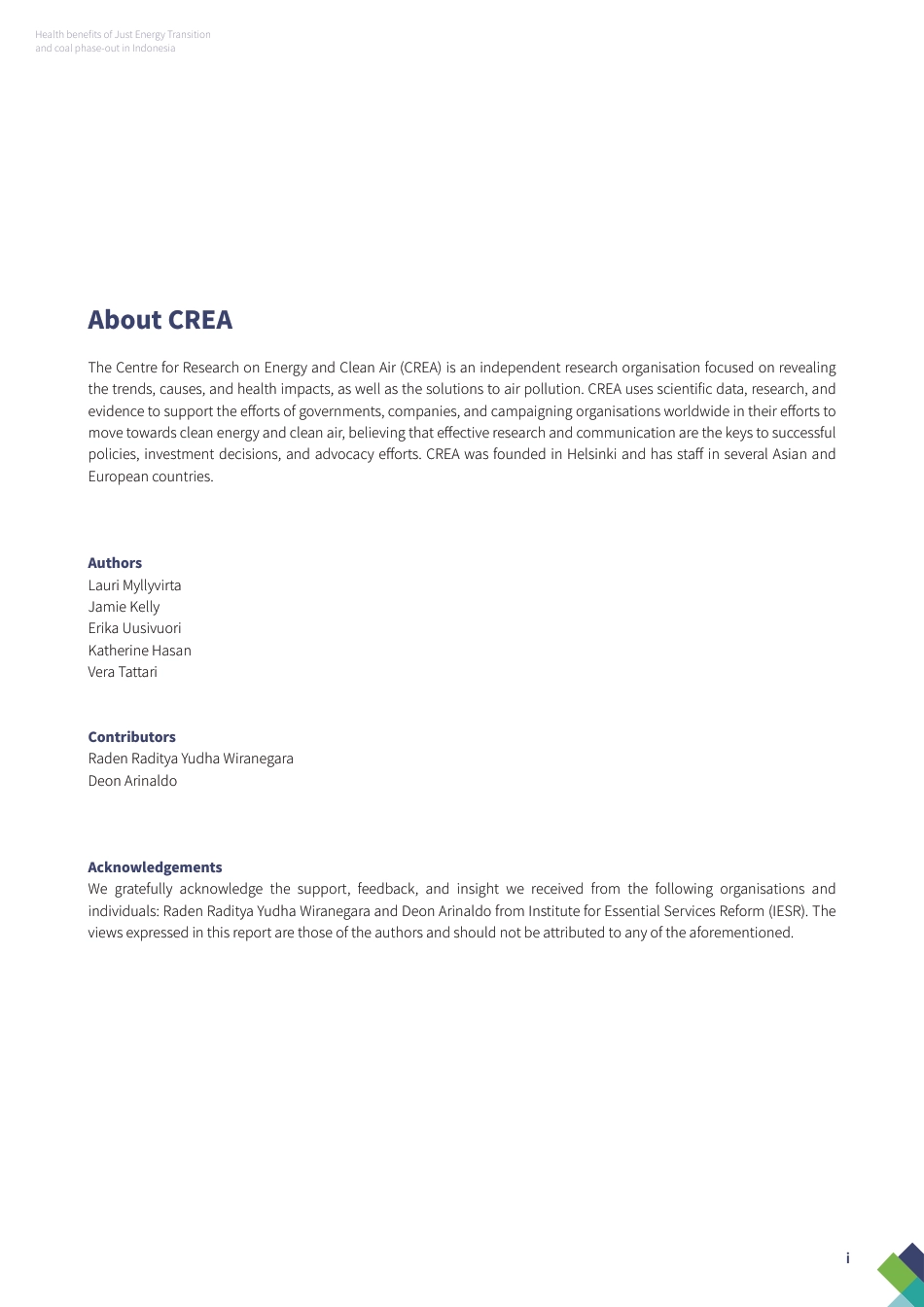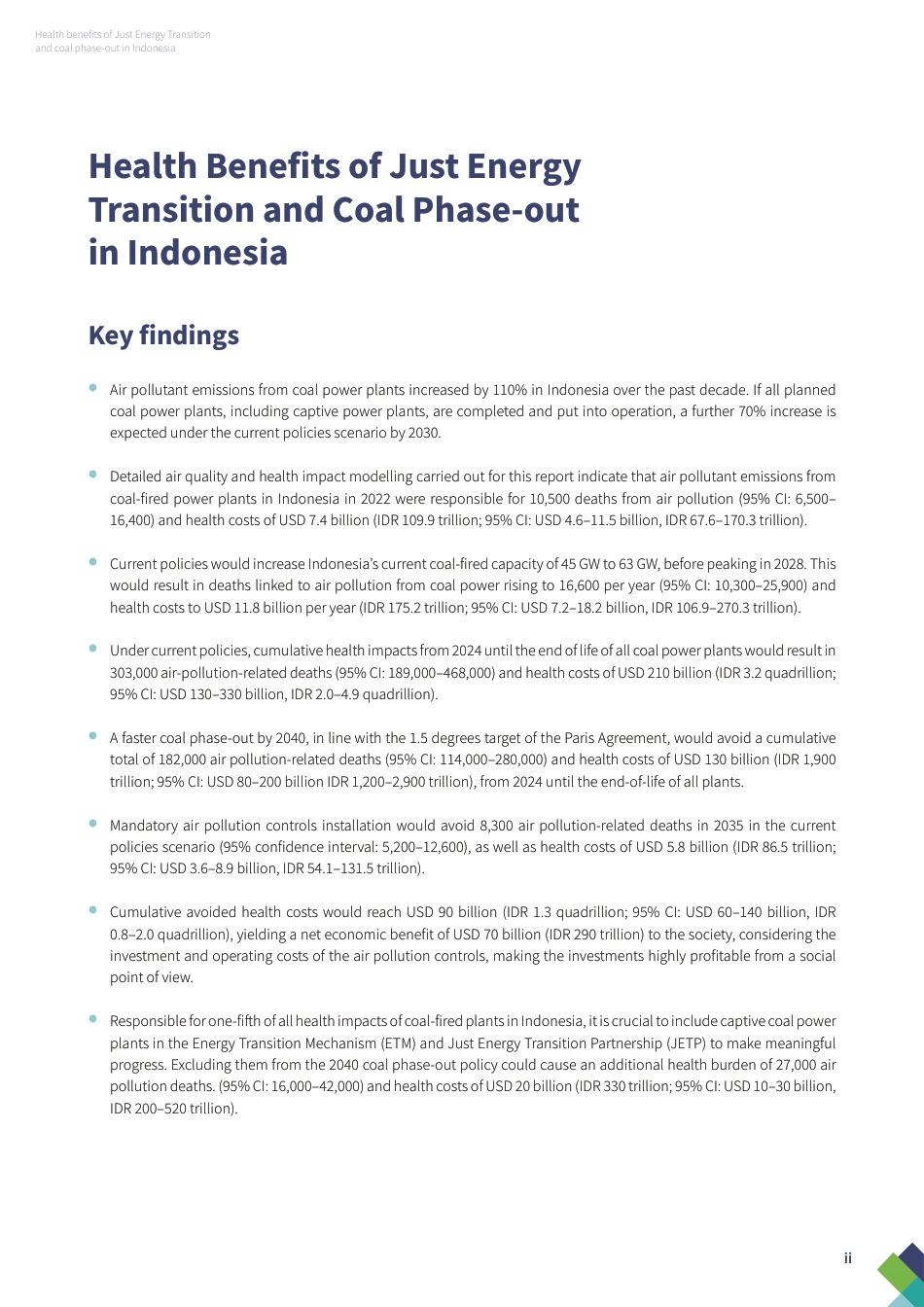Health benefits of Just Energy Transition and coal phase-out in Indonesia1IESRManfaat Kesehatan dari Transisi Energi Berkeadilan dan Penghentian Bertahap Batubara di Indonesia���������������������������������������������������������������������IESR���������������������������������������������������������������������Health benefits of Just Energy Transition and coal phase-out in IndonesiaiAbout CREAThe Centre for Research on Energy and Clean Air (CREA) is an independent research organisation focused on revealing the trends, causes, and health impacts, as well as the solutions to air pollution. CREA uses scientific data, research, and evidence to support the efforts of governments, companies, and campaigning organisations worldwide in their efforts to move towards clean energy and clean air, believing that effective research and communication are the keys to successful policies, investment decisions, and advocacy efforts. CREA was founded in Helsinki and has staff in several Asian and European countries.Authors Lauri Myllyvirta Jamie KellyErika UusivuoriKatherine HasanVera TattariContributorsRaden Raditya Yudha WiranegaraDeon ArinaldoAcknowledgementsWe gratefully acknowledge the support, feedback, and insight we received from the following organisations and individuals: Raden Raditya Yudha Wiranegara and Deon Arinaldo from Institute for Essential Services Reform (IESR). The views expressed in this report are those of the authors and should not be attributed to any of the aforementioned.Health benefits of Just Energy Transition and coal phase-out in IndonesiaiiHealth Benefits of Just Energy Transition and Coal Phase-out in Indones...



